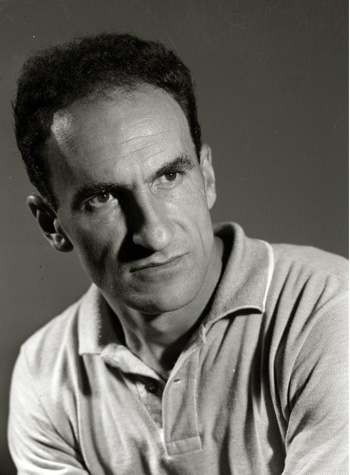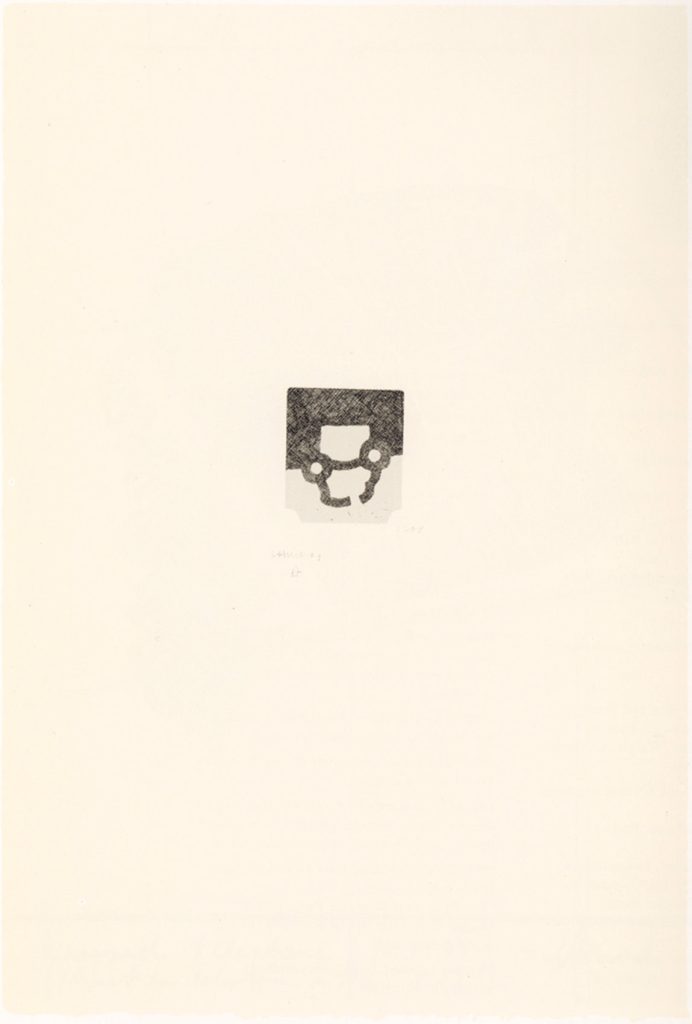Eduardo Chillida
Aged nineteen, Eduardo Chillida began studying architecture at the University of Madrid, but he abandoned his studies to devote himself to sculpture. Nevertheless, some of the precepts he learned were of vital importance in the conceptual ideation of his later sculptural works, such as the relationship between volumes and space. Previously, in his hometown, he had been the first-choice goalkeeper for soccer team Real Sociedad.
In 1948 he moved to Paris and began a friendship with the painter Pablo Palazuelo. There, having been impressed and captivated by the archaic Greek sculpture...
Aged nineteen, Eduardo Chillida began studying architecture at the University of Madrid, but he abandoned his studies to devote himself to sculpture. Nevertheless, some of the precepts he learned were of vital importance in the conceptual ideation of his later sculptural works, such as the relationship between volumes and space. Previously, in his hometown, he had been the first-choice goalkeeper for soccer team Real Sociedad.
In 1948 he moved to Paris and began a friendship with the painter Pablo Palazuelo. There, having been impressed and captivated by the archaic Greek sculpture in the Louvre Museum, he made his first plaster sculptures. They were figurative works: human torsos carved in plaster as form, thinker, motherhood, torso or concretion, which began to take on a more monumental sense. The adroit combination of volumes and the values of the mass brought these works closer to the language of Henry Moore.
In 1951, he settled in the Basque Country with his wife, in the town of Hernani in Gipuzkoa, and began to work in the forge of Manuel Illarramendi, where he learned the secrets of the art of iron forging. Iron introduced a pivotal change in Eduardo Chillida s trajectory, and he undertook cycles of sculptures that highlighted a concern for the use of open spaces. The sculpture "Ilarik" earned him considerable acclaim, and he began to exhibit work in cities worldwide, including New York, Paris, Milan and Madrid. "Ilarik" was Chillida s first abstract sculpture, and it marked a turning point in his artistic career. Austere and primitive, integrating iron and wood and rejecting the old hierarchy between statue and pedestal, it established constitutive concepts such as space, matter, emptiness or the scale of his future work.
Eduardo Chillida shunned imitations of nature and went in search of creation and invention, posing a spatial problem in each of his works that he solved with the help of the material used in accordance with its properties or characteristics; beyond matter and form, he sought to express an ethical, mystical and transcendental concept of existence. Eduardo Chillida s work consisted of defining the emptiness that animates matter. He forged iron, sculpted granite, alabaster, steel and wood, modelled clay... conceiving imaginary labyrinths. He would opt for one or other material depending on its structural possibilities. His work was characterised by its synthesis into open spaces, integrating to become a part of the outdoors and thus be attainable for anyone interested. Chillida s sculptures can be found by the sea, in the mountains and in cities all over the world.
In September 2000, Eduardo Chillida realised one of his foremost dreams: he set up the Chillida-Leku Museum (Casa de Chillida) in the country house known as Zabalaga, in Hernani. It is a traditional Basque farmstead building refurbished by the sculptor himself and surrounded by a large area of meadows and woods that accommodates the artist s work. A museum befitting his work: outdoors, in a stunning landscape where work and environment are perfectly integrated and where art and nature merge. Visitors wander through the space guided by their intuition. For the artist, this was not only his legacy; he reinvented sculpture to suffuse it with new meanings. Today it is one of the cultural flagships of the Basque Country.
Eduardo Chillida s work has been represented in major museums and art collections in Europe and the United States. He received countless accolades and awards over his lifetime, including: the Prince of Asturias Award for the Arts in 1987 and the Order of Japan in 1991. He exhibited at the Venice Biennale and won both the Carnegie Prize and the Rembrandt Prize, among many others. Chillida died in San Sebastián in 2002.

